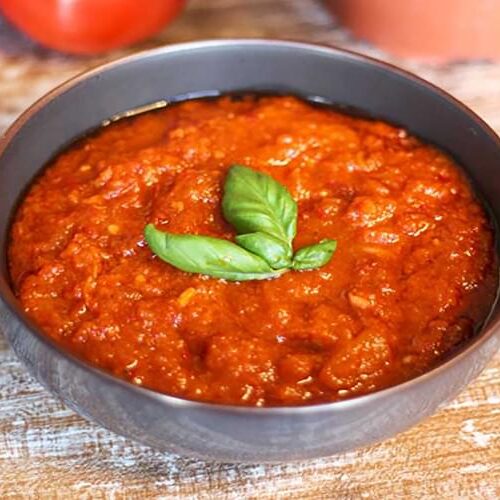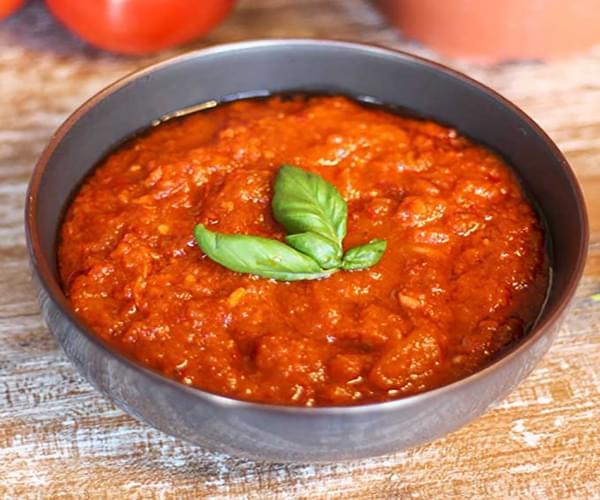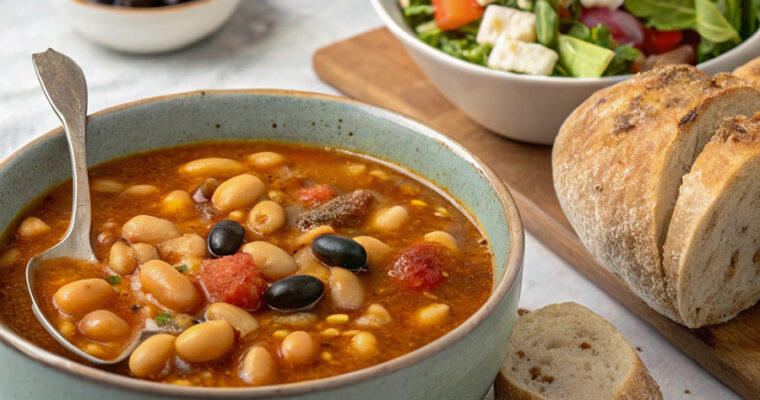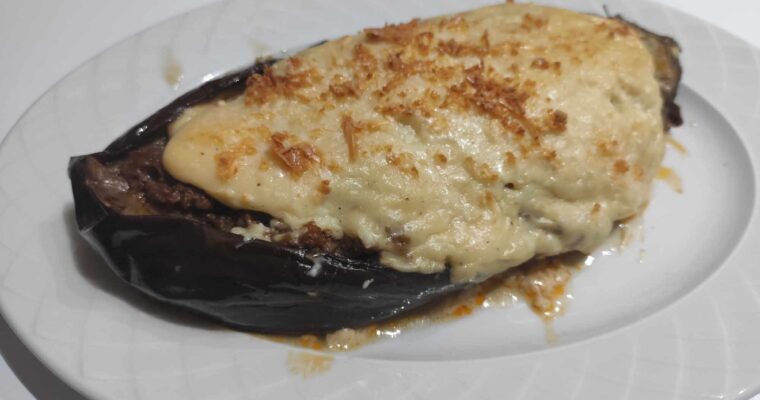Traditional Marinara Sauce Recipe: Easy & Authentic Italian Sauce
Marinara sauce recipe is a staple in Italian cooking, known for its rich, savory flavor and simplicity. If you’re looking for a classic Marinara Sauce Recipe, it’s made with fresh, high-quality ingredients like San Marzano tomatoes, garlic, basil, and olive oil. This tomato-based sauce is perfect for pasta, pizza, and many other dishes. Whether you’re cooking a weeknight dinner or preparing a special meal, this homemade marinara sauce will impress your family and friends with its authentic taste, all in just 30 minutes!
In this post, I’ll guide you step by step through creating the perfect marinara sauce from scratch. Additionally, I’ll share some tips and variations to elevate this dish and make it truly your own. Let’s get cooking!
What is Marinara Sauce?
The marinara sauce recipe is a classic staple in Italian cuisine, and for good reason! This simple, yet flavorful tomato sauce is made with just a few fresh ingredients, making it a perfect addition to a variety of dishes. In Italy, the marinara sauce is known for its rich, savory taste, and its ease of preparation..
The Origin of Marinara Sauce
Unlike heavier sauces like Alfredo or Bolognese, marinara is light, vibrant, and packed with fresh flavors. It’s often used as a topping for pasta (such as Spaghetti alla Marinara), pizza (try it with Pizza Margherita), or even served with seafood and meatballs. Therefore, marinara has earned its place as a versatile and essential sauce in Italian cuisine.
Why This Marinara Sauce Recipe Works
This marinara sauce is not only delicious but incredibly easy to make. The best part? You don’t need a ton of ingredients or complicated steps. It’s all about using the right products—San Marzano tomatoes, fresh garlic, and extra virgin olive oil. When combined, these ingredients work together to create a sauce that’s rich, slightly sweet, and wonderfully savory.
Moreover, making this sauce from scratch ensures you avoid the preservatives and added sugars found in store-bought varieties. With this homemade version, you’ll enjoy a sauce that’s fresher, healthier, and more flavorful.
Why San Marzano Tomatoes?
San Marzano tomatoes are considered the best variety for making marinara sauce. Grown in the volcanic soil of the Campania region in southern Italy, these tomatoes have a sweet and slightly acidic flavor, making them perfect for creating a balanced sauce. Moreover, they’re low in seeds and water, resulting in a thicker, richer sauce without needing additional thickeners.
If you’re unable to find San Marzano tomatoes, you can substitute Roma tomatoes. However, bear in mind that San Marzanos are known for their unique flavor profile, which makes all the difference in the final dish.
Tips for Perfect Marinara Sauce
To make sure your marinara sauce turns out perfect every time, keep these tips in mind:
1. Use the Best Tomatoes
As mentioned earlier, San Marzano tomatoes are the ideal choice for marinara sauce, but if you can’t find them, Roma tomatoes are a suitable substitute. For the best flavor, try to find the San Marzanos.
2. Use Fresh Garlic and Basil
Fresh ingredients are key to creating an authentic, vibrant flavor. Always use fresh garlic and basil for the best results.
3. Blending the Sauce
If you prefer a smoother sauce, you can blend it using an immersion blender after it has simmered. This will give you a velvety texture without affecting the flavor.
4. Make it Spicy
For a bit of heat, add red pepper flakes while sautéing the garlic. Start with a small pinch and increase it according to your spice tolerance.
How to Use Marinara Sauce
Marinara sauce is incredibly versatile. Here are a few classic ways to use it:
- Spaghetti alla Marinara: Toss the marinara sauce with freshly cooked spaghetti for a classic, simple dish.
- Pizza Margherita: Spread the marinara sauce on your pizza dough, top with fresh mozzarella, and bake for a delicious homemade pizza.
- Sardines alla Marinara: Try cooking fresh sardines in marinara sauce for a seafood twist on the classic.
Why You Should Make Marinara Sauce From Scratch
Making marinara sauce from scratch is a game-changer. Not only does it taste fresher and more vibrant than store-bought varieties, but it’s also free from preservatives and added sugars. Moreover, it’s surprisingly easy to make, and once you master the basics, you’ll never go back to jarred marinara.
Conclusion
Homemade marinara sauce is a must-try for anyone who loves authentic Italian cuisine. With just a few ingredients, you can create a rich, flavorful sauce that elevates pasta, pizza, and many other dishes. Whether you’re cooking for your family or impressing guests, this marinara sauce is sure to be a hit.
Give it a try and let me know how it turned out! I’d love to hear about your variations and what dishes you paired it with. If you’re looking for more delicious Italian recipes, be sure to check out my Pasta alla Puttanesca and Pizza Margherita recipes.
P.S.
This marinara sauce freezes beautifully, so feel free to make a big batch! Simply let it cool completely, then transfer it to an airtight container or freezer-safe bag. It will keep for up to 3 months. When you’re ready to use it, just thaw it in the fridge overnight and reheat on the stove. Now you’ve got a quick and easy homemade sauce ready to go whenever you need it!
Frequently Asked Questions (FAQ)
1. Can I use regular tomatoes instead of San Marzano tomatoes?
While San Marzano tomatoes are highly recommended for their sweetness and low acidity, you can substitute them with Roma tomatoes if necessary. However, the flavor may not be as rich or balanced. For the best results, try to get your hands on San Marzano tomatoes for that authentic taste.
2. How long does homemade marinara sauce last in the fridge?
Homemade marinara sauce will stay fresh in the refrigerator for about 5–7 days. Be sure to store it in an airtight container to preserve its flavor.
3. Can I make marinara sauce ahead of time?
Absolutely! In fact, making the sauce a day or two ahead will enhance the flavor as it has more time to develop. Just refrigerate it and reheat before serving.
4. How do I make the sauce spicier?
If you prefer a bit of heat in your marinara sauce, add red pepper flakes when sautéing the garlic. You can adjust the amount based on your spice tolerance.
5. Can I use fresh tomatoes instead of canned?
Yes, you can use fresh tomatoes, though you’ll need to peel and seed them. You’ll also need to cook the sauce a bit longer to achieve the right consistency. If you’re using fresh tomatoes, 2 pounds should be enough for this recipe.
6. How do I store marinara sauce in the freezer?
Let the sauce cool completely before transferring it to an airtight container or a freezer-safe bag. Freeze for up to 3 months. To reheat, simply thaw in the fridge overnight and warm on the stove.
7. Can I make marinara sauce without garlic?
Yes, if you prefer a garlic-free version, you can leave out the garlic. The sauce will still be delicious, though it will lack the rich depth of flavor garlic adds.

Authentic Marinara Sauce Recipe
Ingredients
- 1 can 28 oz San Marzano tomatoes, crushed
- 4 cloves garlic minced
- 5 tablespoons extra virgin olive oil
- 1 teaspoon dried oregano or 1 tablespoon fresh, if available
- 1 teaspoon dried basil or 4 tablespoons fresh basil leaves, chopped
- Salt and freshly ground black pepper to taste
- 1 teaspoon sugar optional, to balance acidity
- 1/2 teaspoon red pepper flakes optional, for a spicy kick
- Pecorino Romano or Parmigiano Reggiano optional, for serving
Instructions
Heat the Olive Oil
- In a large saucepan, heat 5 tablespoons of extra virgin olive oil over medium heat. Add the minced garlic and sauté for 1-2 minutes until fragrant. Be sure not to burn the garlic, as this can make it bitter.
Add the Tomatoes
- Pour in the crushed San Marzano tomatoes and stir to combine with the garlic. Let the sauce simmer uncovered for 15-20 minutes, stirring occasionally. This allows the flavors to blend and intensify.
Season the Sauce
- Add 1 teaspoon of dried oregano (or 1 tablespoon of fresh oregano if available), 1 teaspoon of dried basil (or 4 tablespoons of fresh basil if using), salt, and freshly ground black pepper to taste. Stir to mix the seasonings evenly into the sauce. If you find the sauce to be too acidic, you can add 1 teaspoon of sugar to balance the flavors.
Add Red Pepper Flakes (if using)
- For a spicy twist, stir in 1/2 teaspoon of red pepper flakes during this step, along with the oregano and basil. This will infuse the sauce with a mild heat, perfect for those who enjoy a bit of spice.
Add Fresh Basil (if using)
- If you’re using fresh basil, stir in the 4 tablespoons of chopped basil and let the sauce simmer for an additional 2-3 minutes, allowing the basil to infuse the sauce with its fresh, aromatic flavor.
Cook the Pasta (if using)
- While the sauce is cooking, bring 4 Liters (4 qt) of water to a rolling boil in a large pot. Once the water is boiling, add 1 tablespoon of salt. Then, add the pasta and boil it for 8-10 minutes, or until it reaches al dente. Be sure to check the packet instructions for the specific cooking time of your pasta.
Finish the Sauce
- Once the marinara sauce has simmered and all the flavors have melded together, turn off the heat. Add the remaining fresh oregano and basil to the sauce. Gently stir with a wooden spoon to release the fresh aromas of the herbs.
Combine the Pasta and Sauce
- When the pasta has almost finished cooking, scoop up some of the pasta water and set it aside. Using tongs, add the cooked pasta directly into the saucepan with the marinara sauce. Toss the pasta through the sauce, adding 3-4 tablespoons of pasta water to help combine and smooth the sauce.
Serve and Enjoy
- Once the pasta and sauce are well combined, plate the pasta. Top with fresh basil, oregano, and your preferred cheese, such as Pecorino Romano or Parmigiano Reggiano.
- Serve immediately, and enjoy the delicious, aromatic pasta!
Notes
- Basil is added in the final stage of cooking to ensure that the sauce does not have a bitter taste.
- If fresh basil is not available, use 1 tablespoon dry basil.
- If using fresh plum tomatoes, blanche them for 5 minutes in hot water in order to remove the skin. Once removed from the hot water, place immediately into cold water and remove the skin. Crush and place into sauce pan following recipe instructions.
- Should you want the sauce to be a tad spicy, use the red pepper flakes as instructed when sauteeing the garlic. For red pepper flakes, a typical quantity to start with is 1/2 teaspoon for a mild heat. If you enjoy a spicier kick, you can increase it to 1 teaspoon or more, depending on your tolerance for spice. Given that 1/2 teaspoon is the standard starting point for a balanced, moderate spice level, it’s a good amount to use if you’re aiming for a mild heat. You can always add more to taste when you serve it.
- If you grow your own plum tomatoes and would like to make your own italian passata, use our contact page to contact me and I will send you the instructions and recipe.





